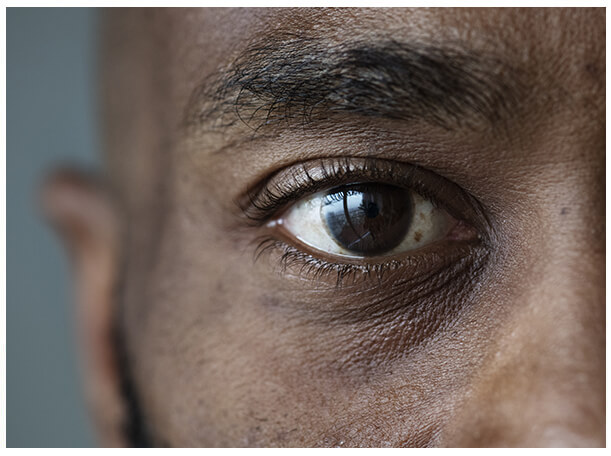Eye Movement Desensitization and Reprocessing


What is EMDR?
Rhythmic eye movements happen during sleep in the rapid eye movement (REM) stage of sleep. During REM, we dream, and particular parts of our brains become active. Therapists using EMDR take advantage of this mental state to help clients reprocess their trauma. Based on the theory that rhythmic eye movements can change how people process memories, EMDR uses lights to cause visual stimulation while the therapist helps the client work through their trauma.
EMDR involves an eight-stage treatment protocol that combines visual stimulation with intensive trauma therapy to alleviate symptoms of traumatic memories. The eight stages of EMDR are:

Phase One: History and Treatment Planning
In the first phase, the client meets with their therapist. The therapist takes a detailed history and discusses the specific areas of the trauma the person wants to target first.

Phase Two: Preparation
The client then builds a rapport with their therapist and learns about trauma and how to process it. The therapist will teach coping skills for the person to use between their sessions, as EMDR can stir up intense emotions.

Phase Three: Assessment and Reprocessing
In phase three, the therapist begins asking the client to visualize or recall specific parts of their traumatic experience and discuss the negative emotions and beliefs they feel while doing this. The client chooses which aspect of their trauma to focus on in that session.

Phase Four: Desensitization
In this phase, the client simultaneously focuses on the stimulated eye movements and the image of their traumatic experience. The therapist uses eye movement techniques to help the person replace the negative feelings the image triggers.

Phase Five: Installation
The client then begins replacing the negative images and thoughts with positive ones during the eye movement sessions. The therapist keeps pairing the positive impression with the eye movement.

Phase Six: Body Scan
In phase six, the therapist helps the client undergo a body scan looking for physical tension left over from the traumatic memory. The therapist will work on them in therapy if they find any negative physical sensations.

Phase Seven: Closure
Closure does not mean the end of therapy. Instead, the therapist helps the client close any holes in their reprocessing of the traumatic memory so they can move on from it. From here, the client may have other traumatic experiences to address.

Phase Eight: Re-Evaluation
In this phase, the client and their therapist review treatment progress and decide which other areas of trauma the person wants to work on.
How Do We Perform EMDR?
The treatment process of EMDR begins like most others, with the therapist gathering information and building a therapeutic rapport with the client. Mentally examining a person’s trauma to help them cope with it also happens in other therapies. However, stimulated eye movement therapy makes EMDR different from other types of therapy. The movement of the eyes while imagining the trauma image makes the process unique.
EMDR and Addiction
Many people with substance use disorders have a history of trauma or a diagnosis of PTSD. When EMDR is used to treat clients with substance use disorders, they usually have a dual diagnosis of PTSD or another mental health condition.
People are more likely to relapse if the trauma that triggered their substance use disorder goes untreated. With well-established links between a history of traumatic events and adult substance abuse, treatment at Everlast Recovery Centers uses evidence-based therapies to help clients work through substance use disorder and their underlying trauma.

EMDR has become a widely accepted PTSD treatment even though it is unclear how eye movements help to reprogram the brain precisely. When used to treat substance use disorder, EMDR is most beneficial when combined with other kinds of therapy.
EMDR in Residential Treatment
During the early recovery process, painful memories of past trauma can be brought up. The safe and comfortable setting at Everlast is the perfect place to go through these most intense parts of trauma recollection and therapy. If the client struggles with these memories or emotions, our clinically trained and empathic staff will be available to help them work through it.
Everlast Recovery Centers also offer individual and group therapies and a variety of other treatment modalities for treating trauma.

Our sophisticated clinical team may recommend EMDR as a part of a cohesive aftercare treatment plan that involves practical life skills, coping skills, and relapse prevention.
EMDR may not work for everyone since every individual has a different experience regarding trauma treatment. Therefore, at Everlast Recovery Centers, we pride ourselves on providing individualized and client-centered care based on each client’s treatment needs. At Everlast, we offer various forms of therapeutic modalities to help our clients get exactly what they need to recover successfully.
Call 866-DETOX-25 to see if Everlast’s trauma therapy program suits your addiction treatment plan.

